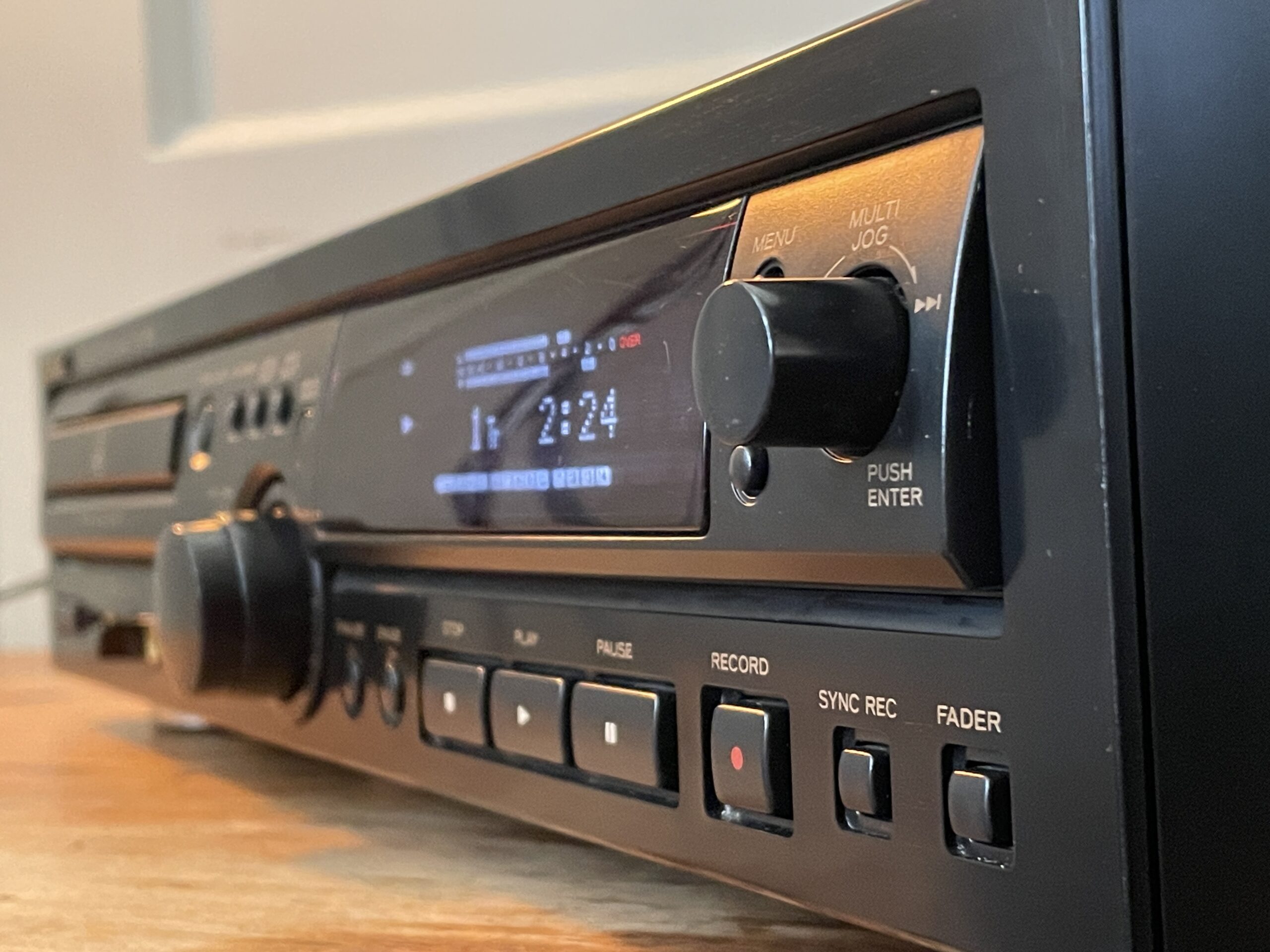Waarom vintage audio apparatuur een betere keuze blijft dan moderne consumenten electronica
In een tijdperk gedomineerd door digitaal gemak en streamingdiensten, is er een overtuigende tegenbeweging ontstaan. Vintage audio apparatuur uit de jaren ’70 tot begin 2000 blijft moderne consumenten elektronica overtreffen op manieren die er het meest toe doen voor meeste liefhebbers. Als voormalig Catawiki audio Expert die duizenden vintage stukken heeft geëvalueerd, heb ik uit de eerste hand meegemaakt waarom verzamelaars, audiofielen en muziekliefhebbers consequent kiezen voor vintage audio boven moderne alternatieven.
De Gouden Eeuw van Hifi (1970s-2000s)
De periode van de jaren ’70 tot de vroege jaren 2000 vertegenwoordigt de gouden eeuw van consument hifi audio. Tijdens dit tijdperk concurreerden fabrikanten zoals Marantz, Pioneer, Technics, McIntosh en talloze anderen niet alleen op functies, maar op bouwkwaliteit en duurzaamheid. Vintage audio apparatuur werd gebouwd om lang mee te gaan. In een tijdperk waarin een versterker, platenspeler en luidsprekers werden beschouwd als investeringen, bouwden fabrikanten voor langdurige duurzaamheid.
Dit was niet toevallig, de audio-industrie van deze periode werkte onder fundamenteel andere principes dan de hedendaagse consumenten elektronica markt. Bedrijven bouwden hun reputatie op producten die jaren lang in de familie konden blijven. Het resultaat was een hele generatie audioa pparatuur die blijft functioneren, en uitblinken; bijna een halve eeuw later.
Superieure Bouwkwaliteit: Toen Componenten Ertoe Deden
Zwaargebouwde Constructie
Als u ooit vintage audio in uw handen heeft gehad, dan merkt u meteen het gewicht op. Een jaren ’70 Marantz receiver weegt aanzienlijk meer dan zijn moderne opvolger, en daar is een reden voor: kwaliteitscomponenten. Vintage apparatuur bevatte substantiële transformatoren, dikke metalen chassis, discrete componenten en robuuste printplaten ontworpen voor decennia van gebruik.
Moderne consumentenelektronica daarentegen vertrouwt zwaar op lichtgewicht materialen, geminiaturiseerde componenten en geïntegreerde circuits die lage productie kosten prioriteren boven duurzaamheid. Hoewel deze benadering betaalbare producten creëert, gaat dit ten koste van kwaliteit en mogelijkheid om reparties zelf uit te voeren..
Kwaliteit Boven Kwantiteit Filosofie
Begin jaren ’80 werd de daling in verkoop gedreven door meerdere factoren; een verzadigde markt die oververkocht was in de jaren ’70, een internationale economische recessie die de aankoop van alle luxegoederen beïnvloedde en ten slotte, er was geen ingebouwde veroudering van de jaren ’70 stereo apparatuur.
Deze observatie onthult een cruciale waarheid: vintage audio apparatuur was zo goed gebouwd dat het geen regelmatige vervanging nodig had. Fabrikanten creëerden hun eigen marktverzadigingsprobleem door producten te bouwen die te lang meegingen. De hedendaagse consumentenelektronica industrie heeft geleerd van deze “fout.”
Het Geplande Veroudering Probleem
Moderne Elektronica: Gebouwd om Kapot te Gaan
Geplande veroudering is het concept van beleid voor het plannen of ontwerpen van een product met een bewust beperkte bruikbare levensduur of een opzettelijk kwetsbaar ontwerp, zodat het verouderd wordt na een bepaalde vooraf vastgestelde periode waarna het geleidelijk functioneert of plotseling ophoudt te functioneren.
Moderne consumentenelektronica omarmt geplande veroudering als bedrijfsmodel. Smartphones gaan 2-3 jaar mee, laptops 4-5 jaar, en zelfs high-end audio apparatuur vereist vaak vervanging binnen een decennium. Dit komt niet door technologische beperkingen, het is bij ontwerp.
Vintage Audio: Investering waardige Duurzaamheid
In tegenstelling tot moderne audio systemen die vaak vervangen worden naarmate nieuwe technologieën ontstaan, wordt vintage audio apparatuur niet beïnvloed door snelle veroudering. Veel vintage componenten zijn gebouwd om lang mee te gaan en kunnen onderhouden of gerestaureerd worden, waardoor ze kunnen dienen als langetermijninvesteringen die hun waarde behouden.
Een jaren ’70 Technics SL-1200 platenspeler, goed onderhouden, zal meerdere generaties moderne platenspelers overleven. Hetzelfde principe geldt voor versterkers, luidsprekers en andere vintage componenten. Ze vertegenwoordigen echte “koop het voor het leven” motto in een tijdperk van wegwerp elektronica.
Het Draagbaarheid Compromis: Hoe toegankelijkheid Kwaliteit Opofferde
De Race naar Miniaturisering
De moderne obsessie met draagbaarheid heeft de audiokwaliteit voor gemiddelde consumenten fundamenteel verminderd. De evolutie van boomboxen naar Walkmans naar smartphones vertegenwoordigt een forse daling in akoestische prestaties. Hoewel deze apparaten ongekend gemak bieden, hebben ze hele generaties genormaliseerd om inferieure geluidskwaliteit als normaal te accepteren.
Vermogen Vereisten en wetenschap
Wetenschap is niet veranderd sinds de jaren ’70. Kwaliteitsgeluidsreproductie vereist nog steeds voldoende vermogen, drivers van formaat en goed ontworpen behuizingen. Vintage luidsprekers bevatten vaak 12-inch woofers, substantiële magneten en zorgvuldig vervaardigde klankkasten. Moderne draagbare apparaten proberen de wetenschap te omzeilen met kleine drivers en minimale versterking, resulterend in gecomprimeerd, levenloos geluid.
De Koptelefoon Cultuur
Hoewel high-end koptelefoons enorm zijn verbeterd, ervaart de gemiddelde consument nu muziek door oortjes ontworpen voor gemak in plaats van kwaliteit. Vintage audio systemen waren ontworpen voor kamer vullend geluid, wat een meeslepende luisterervaring creëert die draagbare apparaten eenvoudigweg niet kunnen repliceren.
De Vinyl Renaissance: Cijfers Liegen Niet
Ongekende Groei Statistieken
De vinyl terugkeer biedt overtuigend bewijs voor de blijvende aantrekkingskracht van vintage audio. Vinyl albumverkoop in de Verenigde Staten is voor het 17e opeenvolgende jaar gegroeid in 2023, met 49,6 miljoen vinyl albums verkocht, een stijging van meer dan 14 procent ten opzichte van het vorige jaar.
Marktwaarde Explosie
De wereldwijde Vinyl Records marktomvang zal 2.020 miljoen euro zijn in 2024, uitbreidend naar 4.093 miljoen euro tegen 2031, met een Samengestelde Jaarlijkse Groeivoet (CAGR) van 10,60%. Deze opmerkelijke groei toont aan dat consumenten actief alternatieven zoeken voor digitaal gemak wanneer kwaliteit ertoe doet.
Fysiek Formaat Dominantie
Vinyl was goed voor bijna driekwart van alle fysieke formaat inkomsten, wat zijn onmiskenbare heropleving op de markt toont. Met 44 miljoen vinyl platen verscheept in 2024—meer dan CD-verschepingen—is het duidelijk dat vinyl’s comeback niet slechts een vluchtige trend is.
Zelf repareren: Een Verloren Kunst in Moderne Elektronica
Vintage Apparatuur: Consument vriendelijk Ontwerp
Vintage audio apparatuur was ontworpen met reparatie in gedachten. Schakelschema’s werden meegeleverd bij aankopen, componenten waren gemakkelijk toegankelijk, en lokale reparatiewinkels floreerden. Een doorgebrande condensator of versleten potentiometer was een kleine ongemak, geen doodvonnis voor de apparatuur.
Moderne Complexiteit vs. Vintage Eenvoudigheid
Vintage versterkers in de consumentenmarkt zullen vaak te repareren zijn met eenvoudigere ontwerpen en vervangbare componenten. Deze onder optie om te repareren verlengt de levensduur van vintage apparatuur voor vrijwel altijd terwijl moderne apparaten vaak elektronisch afval worden na hun eerste grote storing.
De “Right to Repair” Beweging
De groeiende ”right to repair” beweging benadrukt hoe ver we zijn afgedwaald van de gebruiker vriendelijke filosofie van vintage audio. Moderne fabrikanten voorkomen actief reparaties door eigendomscomponenten, verzegelde behuizingen en beperkte documentatie. Vintage apparatuur fabrikanten gingen ervan uit dat klanten hun investeringen zouden willen onderhouden.
Visuele Excellentie: Toen Ontwerp Ertoe Deed
Industrieel Ontwerp als Kunst
Vintage audio apparatuur vertegenwoordigt een tijdperk waarin industrieel ontwerp werd beschouwd als een kunstvorm. De geborstelde aluminium frontplaten van jaren ’70 receivers, de houten kasten van klassieke luidsprekers, en de precisie loopwerken van platenspeler creëerden objecten die zowel mooi waren om te observeren als te bedienen.
Deze periode bracht legendarische ontwerpen voort die moderne ontwerpen blijven beïnvloeden. Dieter Rams’s werk voor Braun creëerde tijdloze ontwerpen die “absoluut competitief zijn met hedendaagse apparaten en ook de volledige gebruikswaarde brengen in het dagelijkse leven.” Zijn filosofie van functioneel minimalisme, belichaamd in producten zoals de Braun Audio 310, vestigde ontwerpprincipes die vandaag de dag nog steeds relevant zijn.
Ontwerpiconen Die een Tijdperk Definieerden
Dieter Rams en de Braun Revolutie
Vanaf 1956 creëerde Braun, onder het ontwerp toezicht van Dieter Rams, veel audio primeurs: de eerste all-wave ontvanger, de eerste mobiele muziekspeler, de eerste aan de muur gemonteerde geïntegreerd geluidssysteem, Het eerste stapelbare Hi-Fi systeem, nu tentoongesteld in MoMA. Rams’s benadering ging niet alleen om design– het ging over het creëren van objecten die de tand des tijds zouden doorstaan, zowel functioneel als visueel.
Het idee voor dit tijdloze ontwerp stamt uit de basishouding van de toen jonge ontwerper Dieter Rams en zijn team bij het opkomende en stijl definiërende Braun AG in Frankfurt in de jaren ’60. De verstandige lay-out van de knoppen, gekoppeld aan eenvoudige ontwerptaal, een reductie tot het basisessentie en een gevoel voor schoonheid zijn net zo waar vandaag als ze toen waren.
De Braun Audio 310, met zijn geperforeerde aluminium frontrooster en gladde afgeronde hoeken van de luidsprekerkast, vertegenwoordigt meer dan alleen audio apparatuur, het is een ontwerpstatement dat een halve eeuw later nog steeds relevant blijft. Marktprijzen variëren in een bereik tussen enkele honderden euro’s voor stereosystemen in verschrikkelijke staat en tot enkele duizenden euro’s voor een jaren ’70 set in perfecte conditie.
Jacob Jensen en Deens Minimalisme
Jensen’s eerste complete product voor Bang & Olufsen was de Beomaster 5000 receiver, uitgebracht in 1967. Zijn samenwerking met Bang & Olufsen zou 27 jaar duren en resulteren in veel van de meest herkenbare audio-ontwerpen ooit gecreëerd.
Over de periode van 27 jaar zou Jensen 234 producten ontwerpen voor het Deense audio-video merk, maar het is de onmiskenbare dual-arm tangentiële toonarm voor de Beogram 4000 Series platenspeler, met een geborstelde aluminium plint.
Jensen’s ontwerpfilosofie van “Anders maar niet vreemd” creëerde producten die grenzen verlegden terwijl ze toegankelijk bleven. De Beomaster 1900 was een van de meest succesvolle producten van het Deense merk Bang en Olufsen in termen van verkoop. Toen de receiver werd uitkwam, markeerde de heftige minimalistische verschijning een vertrek in klassieke receiver ontwerp, en de nakomelingen bleven deel van het Beomaster assortiment voor meer dan 20 jaar.
Ken Ishiwata en de Kunst van Geluid Verfijning
Terwijl Rams en Jensen zich richtten op vorm, verhief Ken Ishiwata de kunst van geluidsverfijning tot celebrity status. Na meer dan 40 jaar bij Marantz te hebben doorgebracht, is hij zoiets als een celebrity, en wordt vaak belaagd op hi-fi shows met mensen die om zijn aandacht vechten.
“De CD-63 KI Signature is een klassieker, veel verzamelaars houden deze nog steeds in hun collecties. Het is niet de meest neutrale klinkende machine, maar het heeft een heel bijzonder sexy geluid.” Ishiwata’s benadering combineerde technische excellentie met een bijna artistieke benadering van geluidsafstemming.
Deze limited series vertegenwoordigen maanden, of zelfs jaren, van fine tuning en modificaties om het “juiste” geluid te bereiken volgens meester Ishiwata’s normen. Zijn KI Signature modellen zijn objecten van verlangen niet alleen voor hun geluid, maar voor de vertegenwoordiging van ongekend vakmanschap.
Museum-Waardige Ontwerperfenis
De design excellentie van vintage audio is niet alleen nostalgische mening, het is gevalideerd door ‘s werelds meest prestigieuze ontwerpinstellingen. Jacob Jensen’s werk voor Bang & Olufsen werd gepresenteerd als een solo tentoonstelling in New York’s Museum of Modern Art (MoMA) in 1978. Genaamd Design for Sound, de tentoonstelling omvatte 28 audioproducten, waarvan vele in de permanente collectie van het museum bleven.
Net zoals Dieter Rams’s Atelier systeem, nu trots tentoongesteld in MoMa, een breed assortiment componenten voor thuisentertainment aangeboden, wat deze ontwerpen vastzette als echte culturele artefacten in plaats van oude meuk.
Voelbare kwaliteit en Gebruikerservaring
Moderne touchscreens en digitale interfaces missen de voelbare kwaliteit van vintage bedieningselementen. De aanraakgevoelige bedieningselementen waren zeer innovatief en gebruikten een techniek die bekend zou worden als “sensi-touch” op producten zoals de Beomaster 1900. Het substantiële gevoel van een kwaliteit volumeknop, de precieze actie van tuimelschakelaars, en de visuele feedback van analoge VU-meters creëren een unieke gebruikerservaring die moderne minimalisme niet kan repliceren.
Tijdloze Visuele Aantrekkingskracht
Terwijl elektronica uit de jaren ’90 er gedateerd uit kan zien, behouden ontwerpen van meesters zoals Rams, Jensen, en verfijnd door figuren zoals Ishiwata tijdloze design aantrekkingskracht. De strakke lijnen, kwaliteitsmaterialen en doelgerichte ontwerpelementen blijven moderne interieurs aanvullen. Deze visuele duurzaamheid draagt bij aan hun waarde als zowel functionele apparatuur als ontwerpobjecten.
Een van de meest bekroonde industriële ontwerpproducten ter wereld, de Beogram 4000 hielp de esthetiek van modern audio-ontwerp vormgeven. Deze stukken bewijzen dat groot ontwerp technologische generaties overstijgt, decennia na hun creatie mooi en functioneel blijvend.
Geluidskwaliteit: De Ultieme Test
Analoge Warmte vs. Digitale Precisie
Het debat tussen analoge warmte en digitale precisie gaat door, maar voor veel luisteraars biedt vintage audio een meer boeiende luister ervaring. De subtiele harmonische vervormingen en dynamische karakteristieken van vintage componenten vullen muziek vaak aan op manieren die wiskundig perfecte digitale systemen niet kunnen.
Dynamisch Bereik en Muzikaliteit
Vintage apparatuur werd ontworpen tijdens het tijdperk van zeer dynamische geluidsopnames. Ingenieurs optimaliseerden deze componenten voor het volledige dynamische bereik van akoestische instrumenten en natuurlijke geluidslandschappen. Moderne apparatuur geeft vaak prioriteit aan de gecomprimeerde, zwaar bewerkte audio die de huidige muziekproductie domineert.
Investeringswaarde en Marktdynamiek
Waardevermeerdering vs. Waardevermindering
Terwijl moderne elektronica onmiddellijk waarde verliest bij aankoop, apprecieert de prijs van kwaliteit vintage audio vaak met de tijd. Iconische stukken van gerespecteerde fabrikanten zijn echte verzamelobjecten geworden, waarbij sommige modellen verkopen voor veelvouden van hun oorspronkelijke verkoopprijzen.
Marktstabiliteit
Er is nog een ander consumptieformaat dat jaar na jaar groei heeft getoond voor de laatste 18 jaar achtereen: vinyl albumverkoop. Deze consistente groei in fysieke media consumptie ondersteunt de vintage audiomarkt, wat stabiele vraag creëert naar kwaliteit vintage audio apparatuur.
Het Milieu Argument
Duurzaamheid Door Levensduur
Vintage audio apparatuur vertegenwoordigt het toppunt in duurzame elektronica. Een jaren ’70 versterker die blijft werken na 50 jaar heeft een milieu voetafdruk die veel lager is dan meerdere generaties vervangende moderne apparatuur. Deze levensduur vermindert elektronisch afval en verminderd de middelen die nodig zijn voor constante fabricage van producten met een korter levensduur.
Kwaliteit Boven Consumptie
De vintage audio filosofie van “koop eens, gebruik voor altijd” staat direct tegenover moderne consumptiepatronen. Door vintage apparatuur te kiezen, kiezen consumenten ervoor uit de eindeloze upgrade cyclus te stappen die moderne elektronica karakteriseert.
Conclusie: Waarom Vintage Audio Wint
De superioriteit van vintage audio is niet gebaseerd op nostalgie of trends ,het is geworteld in fundamentele verschillen in fabricagefilosofie, bouwkwaliteit en ontwerpprioriteiten. Hoewel moderne technologie op veel gebieden is vooruitgegaan, heeft de consumentenelektronica industrie systematisch duurzaamheid, repareerbaarheid en geluidskwaliteit opgeofferd ten gunste van gemak, draagbaarheid en winstmarges.
Voor luisteraars die prioriteit geven aan geluidskwaliteit, bouwintegriteit en langetermijnwaarde, blijft vintage audio uit de jaren ’70 tot vroege jaren 2000 de ultieme keuze. De cijfers ondersteunen deze conclusie: vinylverkoop blijft groeien, vintage apparatuur waarden stijgen, en een nieuwe generatie ontdekt wat oudere generaties nooit zijn vergeten, dat kwaliteit audioreproductie kwaliteit apparatuur vereist.
Terwijl we vooruitgaan in een steeds digitalere wereld, dient vintage audio als herinnering aan wat mogelijk is wanneer fabrikanten excellentie prioriteren boven opbrengsten. Voor degenen die de best mogelijke muzikale ervaring zoeken, blijft het verleden het beste pad voorwaarts bieden.
In een wereld van geplande veroudering en wegwerp elektronica, staat vintage audio als testemanet van een tijdperk waarin producten werden gebouwd om lang mee te gaan, ontworpen om te inspireren, en ontworpen om ervaringen te leveren die moderne gemakken eenvoudigweg niet kunnen evenaren. De keuze tussen vintage en modern gaat niet alleen over audio apparatuur, het gaat over het kiezen van kwaliteit, duurzaamheid en muzikale authenticiteit in een tijdperk van digitaal compromis.




